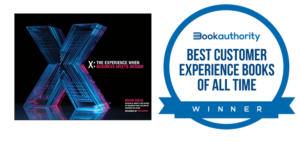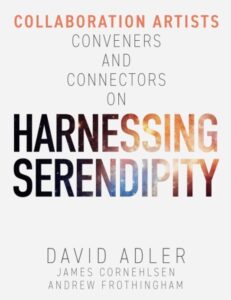
In a post Occupy world, organizations everywhere should contemplate the themes that flooded the undercurrent of one of the greatest consumer uprisings in recent history. Even though some minimize the rise of Occupy as a rebellion without a cause, I believe there’s much to learn from these events to prevent them from happening again…or at least to you.
What’s the Future of Business? WTF
While the inspiration for the insurrection is diverse and personal, one thing is clear, everyday people have had enough. Collectively, the frustration and discontentment with the state of the economy, socioeconomic equality, and overall consumer disregard by business and government boiled over into a worldwide statement that screamed for action and transformation. We were witness to what could be construed as end of business as usual to say the least. What started in Wall Street to protest high unemployment and corporate greed quickly spread to 2,773 Occupy communities in over 82 countries.
What we can learn from Occupy is that it’s just a matter of time until, in its own way; the driving principles of Occupy take aim at your business or industry. Whether we realize it or not, the sentiment that contributes to disgruntlement is not new. Signs have been posted everywhere and technology and social media is only making it easier to organize and rise up.
If you think about your front line of defense as it exists today, the feelings that lead to malaise, such as negative experiences, engagement, or support, are met through marketing or customer service models that for all intents and purposes are outdated. And some quite honestly, evoke thoughts of medieval torture chambers considering how painful it is to endure “service.” There’s a reason people revolt. While experts continually pour over the role of social networks in citizen and consumer revolutions alike, the one thing they share isn’t just technology, it’s a state of mass discontent that leaned on technology to bring about change.
That’s the point. Change or (r)evolution isn’t because of social media, it’s changing because expectations and tolerance continue to evolve. The difference is that nowadays, people can mobilize much faster and to greater extent. Yes, everyday people are now more powerful than ever before. And it is people that play a part in heralding what I refer to as Digital Darwinism, an emerging phenomenon when technology and society evolve faster than the ability to adapt. On the other side of the coin, organizations too, miss their contribution to Digital Darwinism by failing to recognize new opportunities to learn, engage, or adapt.
#AdaptorDie
Today, no company is too big to fail nor too small to succeed. The outcome is driven by an organization’s ability to adapt to market conditions and customer expectations. It’s not a new concept. But what is new is the tremendous journey that organizations must embark upon to get there.
Many business models are rigid, focused on the management of operations, efficiencies, growth opportunities and P&L. This view has worked well for decades. However, now in a new era of digital influence, connected customers, and customers in general, are clamoring to be heard and to become part of the business ecosystem. As a result, leaders must embrace new methodologies, technologies, and systems to engage stakeholders and work together to build a new framework that upgrades the dynamic for stakeholder engagement and collaboration and the resulting experience now and how it’s reinforced over time.
This requires nothing less than the establishment of a dedicated taskforce with an exact mission of transformation. The primary charter is to establish a course for evolution by aligning stakeholders and decision makers around collaboration and decision-making initiatives. It’s not an overnight process. What we are talking about is retrofitting or in some cases re-architecting the foundation to compete in the years to come.
This is done through a four-step rigor that begins internally to have an impact inside and outside the organization. And, as a champion for new possibilities, everything begins with you.

1. Listen – Use new media tools to listen (not in an intrusive way) beyond keywords and sentiment. Observe trends, insights, and opportunities to improve experiences.
2. Learn – Build a procedure, with roles and responsibilities, and a path around discovery and innovation. Translate activity into actionable insights and ensure that a two-way path connects business lines and functions back to the market through direct engagement or the improvement of products and services.
3. Engage – The state of businesses are no longer created, they’re co-created through shared experiences. Stakeholders, including customers and employees, must realize that you’re listening and learning. Engagement is the key to steering and shaping experiences through collaboration. Doing so invests the cultivation of a meaningful community and ultimately loyalty.
4. Adapt – Customers don’t always know what they want. But, they do know what they don’t want. Everything gleaned from steps one through three reveal everything about how an organization can adapt to earn relevance as part of its everyday business practice. Processes, systems, technology, it’s all rooted in the ability to not just move and react to customer revolutions, but eventually lead them.
This is an opportunity to re-examine relationships with customers and employees to not only avert potential crises, but steer more positive engagement and experiences as part of standard business practices – an answer to what’s the future of business if you will. It starts with listening and learning and culminates with engagement and adaptation.
This is why your role is more important then ever before. Everything you know and everything you’re learning will help your business or organization mature, increase in relevance, and deliver more significant experiences. The end results are preference, increased loyalty and advocacy, and ultimately connectedness. It’s how you demonstrate the opportunity and the path forward that count for everything. This is your time…
Please consider pre-ordering my next book, What’s the Future of Business?





Gosh darn it. I never cease to be AMAZED at your clarity of thinking. I’m going to take some time to fully digest this. Then I’m going to take it to heart and run with it. Hopefully, I can inspire some others to run with me.
Claire…wow. Thank you. Let’s go!
Could not agree more and we will likely a species of businesses succumb to this evolution. From my nonprofit perspective I’m not sure if I’d use a dedicated task force — it would mean another meeting. A task force may not necessarily result in a more agile and adaptive organization. In my mind it is a mind-set or focus. Too often we struggle to be everything to everyone, but we may be exhausting our resources in that pursuit. Do we have to please them all? Less can be more (a lot more). We also don’t want to pursue a structure that seeks to prevent “activist customers” – it’s the space in which we can learn the most. Is a thrilled customer that never utters a word (socially or e-socially) disconnected or less connected than our Foursquare Mayor Yelp Royal Occupier? The customer (a membership in our case) that leaves and never whispers a word is the one that keeps me up at night — that ‘s the group I chase to engage, possibly task-force worthy. Great insight as always Brian, thank you. Ironically the Berkeley Occupy Camp was in front of my office.
Mike…what you said. Exactly. What if that taskforce was given a mission…a purpose. Then it works together to solve for or accomplish something great. That’s what we’re here to do and why it takes a culture of leadership over management.
Wow. This is very helpful, Brian. Thank you!
Thank you Dave!
Brian, you on spot on with this statement, “Change or (r)evolution isn’t because of social media, it’s changing because expectations and tolerance continue to evolve.” We have to step away from platform/tool-specific strategies because the audience will evolve and make those strategies obsolete quicker than we think. With the example of the Occupy movement, think back to the hippie culture of the 60s. This culture thrived away from mainstream media, social networks, the internet, and mobile devices. Why? Because people were passionate about sharing their message and listening to other ways of thinking, being spread by word of mouth. Imagine if the digital world went offline, could you still manage to Listen -> Learn -> Engage -> Adapt? The digital culture gives us tools to use to manage these analog processes. Bottom line is we cannot forget we are people talking to people. To excel online, you need to excel offline as well.
YES!
Brian, in all of your posts you never veer away from reality. Many times you present your readers the obvious and simplest solutions to many everyday problems.
I agree with your statement regarding businesses present need to adapt in order to survive. But in regards to adapting, how much should companies adapt? Do they change their core values and vision or their different approaches to reaching audiences or simply their new line of products? The only thing I fear is that if a company “adapts” too much how much of the old company that many people were drawn to still remains?
I really appreciate this comment. This reminds me of Clay Christensen theory of disruption, “disruptive technology provides an example of when the common business-world advice to “focus on the customer” (“stay close to the customer”, “listen to the customer”) can sometimes be strategically counterproductive.
It still takes vision to lead a company rich with legacy (or luggage) in new directions without losing the core of what made the business great. Think of the word resilient in place of adaptive. It’s a proactive approach to thrive rather than adapt to merely survive.
I agree with you when you say Digital darwinism is a real thing that businesses need to be aware of. Because of the nature of the business world today, those not adapting to changes won’t be able to compete on the same level as those who are adapting. Thank you for your insight on this topic.
Truth
#truth
Change is the only thing which is permanent in business environment, marketers today needs to be wary of changing customer requirements and respond in accordance to their demands, only then will they be successful in establishing long term relationships which will fetch business for years to come.Listen, learn, engage and adapt are the simple rules for keeping in business – a mantra well understood at Synechron.
Cheers!
Internet marketing isn’t thriving because the
web makes it possible to sell things online, but because people want to do
business that way. Similarly, social media marketing isn’t the cause of these
changes but, as you say, one of the tools that makes the changes possible. The
bottom line is that if a business doesn’t provide the service that their
prospective customers expect then they won’t survive. If online engagement is
the way to do business in the Twenty-first Century then that is what businesses
have to learn to do in order to be in the game. The ones that fail are the
dinosaurs of the business world.
Would you speak more to Customer Loyalty?